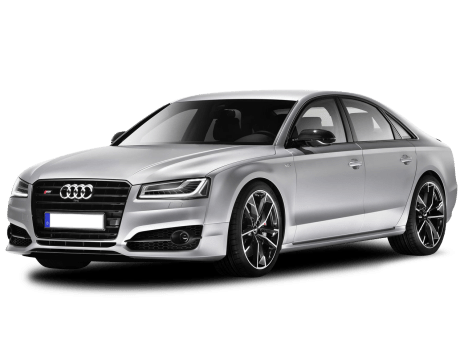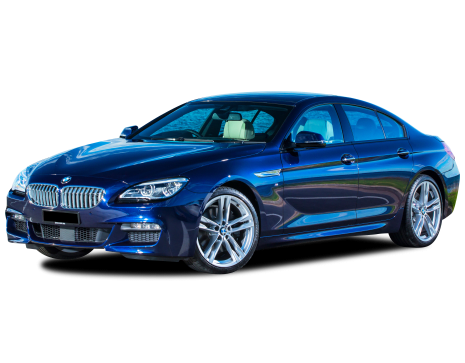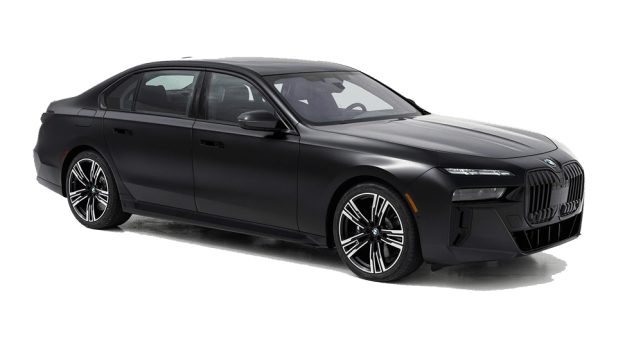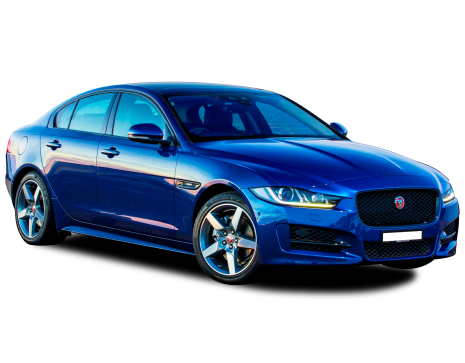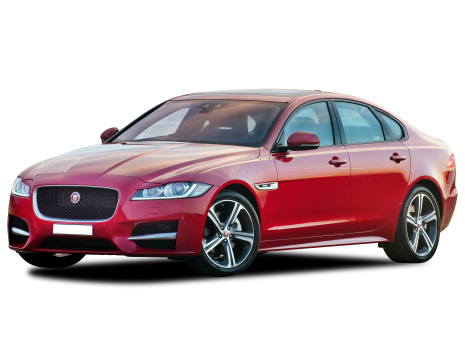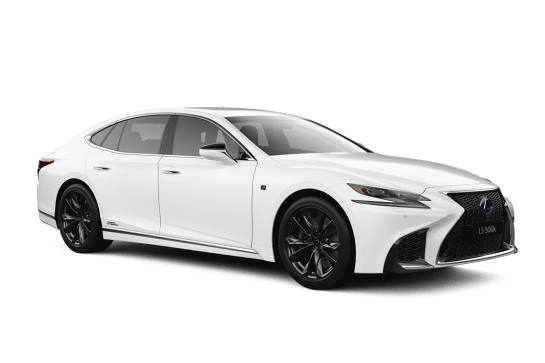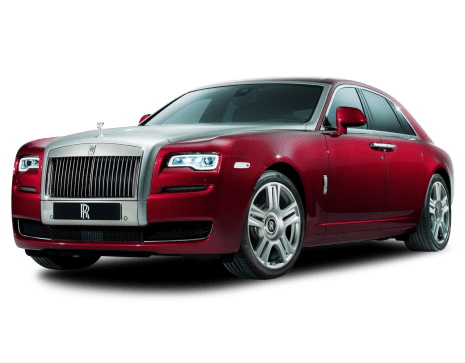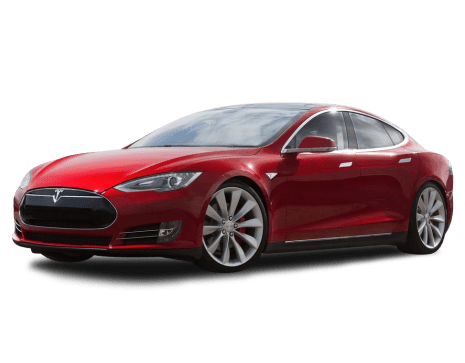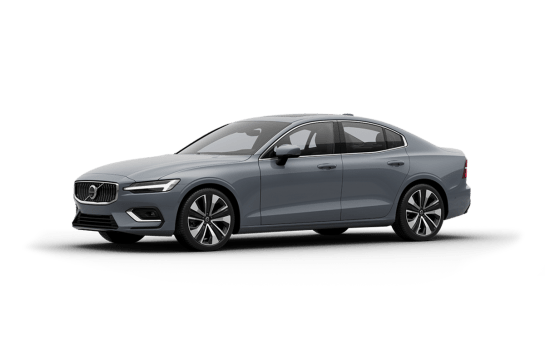
Maserati Quattroporte VS Lexus IS
Maserati Quattroporte
Likes
- Terrific powertrain
- Huge luxurious cabin
- Great looks and badge
Dislikes
- Iffy entertainment software
- Weird sensations through electric steering
- Some dodgy plastic chrome bits
Lexus IS
Likes
- Sleek and efficient hybrid drive
- Graceful ride
- Spec improvements
Dislikes
- Slow
- Busy interior design
- Fiddly and over-complicated software
Summary
Maserati Quattroporte
Maserati's Quattroporte is part of a dying breed. A decade or so ago, the European manufacturers took a huge amount of pride in their range-topping big luxury sedans, cars you can either drive or be driven in, bristling with the latest technology.
In 2015, all we hear about are the range-topping SUVs from those makers, with cars like the S-Class and 7 Series fading slowly into irrelevance.
While by no means low-tech, the Maserati Quattroporte takes the high style route, focussing on a luxurious interior with that handmade feel.
| Safety rating | |
|---|---|
| Engine Type | 3.0L turbo |
| Fuel Type | Premium Unleaded Petrol |
| Fuel Efficiency | 9.6L/100km |
| Seating | 5 seats |
Lexus IS
One question frequently discussed in the skunkworks of the CarsGuide office is: What exactly does Lexus stand for?
When the brand debuted its original export-market IS sedan in 1999 the messaging was more or less clear: Toyota’s premium sub-brand was here to be a Japanese BMW.
The brand even employed Nobuaki Katayama – chief engineer on the iconic Corolla AE86 program – to again take the reins of its small rear-wheel drive sedan program.
As the years went on though, Lexus changed. Fundamentally geared toward the US market, the second-generation (wild IS F aside) became a bit more sedate and softer around the edges, while the third generation strayed even further from the sedan’s performance-inspired roots, leaning into a plush interior, hybrid drive, and even CVT transmissions.
This brings us to today’s Lexus IS. Essentially a heavy facelift of the third generation (which arrived back in 2013), the brand has “reimagined” its core sedan with a tweaked design and updated technology for 2021.
Is it enough to keep it relevant against its ever-present European rivals and the newly arrived threat from Hyundai’s Genesis G70? I took a signature IS300h hybrid for a week to find out.
| Safety rating | |
|---|---|
| Engine Type | 2.5L |
| Fuel Type | — |
| Fuel Efficiency | 4.9L/100km |
| Seating | 5 seats |
Verdict
Maserati Quattroporte7.6/10
Beauty is way more than skin-deep in the Quattroporte and while the 330 doesn't have the punch of the S, it's hardly that much slower. Maserati reasons you will want to spend the $25,000 saved on options, concentrating on the Italian craftsmanship rather than the outright performance available in the V8 or the efficiency of the less aurally attractive diesel.
As with any car of this type, you've got to want one in the first place, but for a big, beautiful sedan, there's nothing as good looking this side of an Aston Rapide. The Quattroporte 330 does nothing to dim the allure of Modena's big mover and, if you're that way inclined, nobody on the outside will ever know.
For Quattroporte money would you stick with the Italian or be tempted by one of its German rivals? Let us know in the comments below.
Click here to see more 2016 Maserati Quattroporte pricing and spec info.
Lexus IS7.6/10
Smooth, cosy, quiet, the IS looks and feels better than ever, but without a doubt this hybrid version is a car best suited to cruising the dense metropolis of Chiba at midnight more than it is carving up a bunch of S-bends in the Australian countryside on the weekend.
While that might still limit its appeal for fans of German sports luxury sedans and place it further from the original IS’s ambitions, it does offer an intriguing efficiency and luxury focused alternative, without the compromises brought by rivals with more sporting intent. In a way then, the IS 300h perhaps inadvertently best embodies what Lexus is as a brand.
Design
Maserati Quattroporte8/10
Long, flowing lines mark out the Maserati as something quite different to its German, British and Japanese competition. This Quattroporte has increased in every dimension but the lines cover its size beautifully.
Big wheels, long wheelbase, low ride but it still looks like a sedan rather than pretending to be a coupe.
The elegance of the lines is complemented by a distinct lack of bling – there's little in the way of chrome work or shouty details. There's plenty satin finishes available and the beautiful paint, while available in pretty much any colour you like, is best kept to a restrained, deep hue. Or silver.
The cabin will doubtless age well. Classic shapes house a fairly conventional but hugely comfortable cabin. The front seats have heaps of adjustment and are large but supportive. Naturally, the leather is soft and supple.
The central screen isn't the dominant feature, like a 50-inch LCD screen in a small living room while buttons are kept to a minimum.
The rear seat is sensationally comfortable, with hectares of available space and a seat comfortable for either lounging or working.
Lexus IS
Look closely and quite a lot has changed. This is really a story of doing a facelift right. Lexus has kept all the great-looking bits of the car that launched in 2013, like its striking side profile and angular accents, while dumping most of its least popular elements like the spidery front light-clusters and busy front splitter, in favour of something more refined and conservative.
It even adds some new flair in the rear three-quarter, with dramatic LED light-clusters working their way into a trendy highlight strip across the boot lid.
These changes all add up for a much tougher, sportier, and nuanced design compared to the outgoing car. One that manages to make an eight-year old design look as contemporary as ever.
I even liked our test car in its plain black shade, although I'm less sure about those conservative-to-a-fault, almost Camry-esque alloy wheels.
On the inside, sadly not a whole lot has changed. The busy design looked dated when this generation of IS launched in 2013, and it still looks dated now.
The visual assault of buttons, toggles, displays, textures, and trims is a lot to take in, and makes the cabin feel smaller than it is.
It probably didn’t help the sensory overload of this car’s interior as I hopped out of the stripped-back interior in the Tesla Model 3 I had the week before.
My less-than-impressed brother, a student of design, described the IS’s interior best when he told me “It’s a bit maximalist, don’t you think?”
If nothing else, at least Lexus hasn’t blatantly imitated anyone else when it comes to its interior, but the brand remains firm on dorky design items like the laptop touchpad, redundant drive-select dial, and odd vacant panels under the climate unit which do it no favours.
A welcome upgrade for the 2021 model year is the new media screen, a highlight piece perched atop the dash. It’s bright, has excellent contrast, and doesn’t seem to fall victim to glare.
The Apple CarPlay support I used was seamless and sharp and made the most of the available real-estate in its widescreen layout.
I somehow didn’t mind that the instrument cluster in this base car is analog. It almost suits the IS’s character better than a digital set-up would. Also offered is a small information display between the dials which I used for monitoring the hybrid drive.
A final note on the IS’s design. The fit and finish is quality, inside and out. It leaves you with an impression that this is an immaculately built vehicle, one that should be a must for all luxury cars, and always a strong point for Lexus.
Practicality
Lexus IS
Well, the IS is a sedan, so it doesn’t quite have that high-riding appeal of an SUV, and for this update it has even leaned further into its low-slung proportions with a roofline that descends a further 15mm and a boot lid which is 31mm lower overall.
As with the previous car, the interior is quite closed-in thanks to that busy dash design and large centre console. Rather than feeling claustrophobic though, it is best described as cosy, with lots of plush finishes throughout the doors and centre stack befitting a luxury nameplate.
Adjustability is great for the front two occupants and there are two large bottle holders between the seats, a large but shallow console box under the armrest, bottle holders with adjoining bins in the doors, and a smallish glove box.
That’s about where storage ends though, with no extra trays or bins in front of the oddly placed shifter, just an awkwardly finished plastic panel where it feels like a little tray or storage cutaway should be.
The touchpad for operating the media screen joins an unnecessary drive-select cluster in eating up centre console space where there could be more storage.
The rear seat is quite limited on space despite being lavishly trimmed. I fit behind my own (182cm/6'0") driving position with little knee or headroom to spare.
Again, it’s cosy and very comfortable, but if you're taller or wider than me you may run into issues.
The centre rear seat is all but useless for adults, with the IS’s rear-drive architecture necessitating a huge transmission tunnel that almost comes as high as the seat base itself.
Storage is limited to pockets on the back of the front seats, small bins in the doors that double as handholds, and a drop-down armrest with two bottle holders.
There are no power outlets for rear passengers, but there are dual adjustable air vents.
Boot space is 450L which is a little small for the class. It’s impressive the hybrid only managed to lose 30 litres compared to petrol-only IS variants, though, so best to count your blessings.
The largest CarsGuide travel case easily fit in the wide but short available space.
Price and features
Maserati Quattroporte7/10
The current Quattroporte has been with us now for a couple of years in diesel and petrol turbocharged V6s and turbo V8 forms.
The 330BHP uses the same, Ferrari-built V6 but detuned to 'just' 330 bhp. The price has been detuned too, dropping $25,000 from the V6 S's entry price to kick off at $210,000.
Maserati 330bhp benefits from an overall specification improvement across the range, landing in your garage with a ten-speaker stereo with USB and Bluetooth, power everything, dual-zone climate control, keyless entry and start, front and rear parking sensors with reversing camera, cruise control, sat-nav, auto headlights and wipers, double glazed windows and an interior covered in leather and wood.
Later in the year, your Quattroporte will be available with a new silk trim from Zegna
Only very occasionally does it become clear that Maserati is part of the Fiat Group and that moment comes when you use the 7.0-inch central screen in the dash.
The software is based on the group's UConnect and it isn't great. It's not bad, but it feels its age (however, it's much better than the system on the Gran Turismo), needing a lot more work or a quick surrender to Apple's CarPlay or Android Auto.
Once you work your way through the weird menus, it's fine to use and is miles ahead of the not-much-cheaper Lexus LS unit which is almost unusable.
Sound from the ten speaker stereo is crystal clear and the phone performance is also very good.
Lexus IS
To be precise the variant we’re looking at here is the IS 300h Luxury. It’s the base IS trim with the hybrid powertrain and it wears a before on-road costs (MSRP) of $64,500.
Base car or not, the new IS is very well specified. Now standard are 18-inch alloys (up from 17s), full LED headlight clusters, eight-way power adjustable front seats, dual-zone climate control, 10-speaker audio system, and importantly a brilliant new 10.3-inch multimedia screen with widescreen Apple CarPlay, Android Auto, built-in navigation, and DAB+ digital radio support.
Keyless entry and push-start ignition also continue to be offered, as well as a leather-look interior trim which in our car was in a rather contrasting 'Ochre' colour option.
Our IS 300h was also fitted with the creatively named ‘Enhancement Pack 1’ which adds an openable moonroof for $2000. The significantly more expensive ‘Enhancement Pack 2’ ($5500) adds the moonroof alongside 19-inch alloys, upgraded LED headlights, interior ornamentation, scuff plates, a panoramic reversing camera, 17-speaker premium audio, ‘leather-accented’ interior trim, ventilated front seats, and an electric rear sunshade.
These packs are seemingly largely unnecessary but are also very cheap for a brand at the premium end of the market.
Lexus has made pretty much all of its high-end active safety equipment standard on this base ‘Luxury’ for 2021, alongside some previously unavailable tech which we’ll take a look at in the safety section of this review.
At this price the Lexus IS 300h goes into battle against the Mercedes-Benz C 200 ($66,900), BMW 320i ($70,900), Audi A4 35 TFSI ($55,900), and the ever-looming threat of Hyundai’s Genesis, which offers its similarly-sized G70 in base form at $59,300.
Some of these base-spec rivals are cheaper, some are more expensive, but did you notice none of them are hybrids?
Access to Toyota’s affordable and popular hybrid drive is a real point of difference for the Lexus brand, and we expect it’s a key drawcard for the loyal customer base. More on that later.
Under the bonnet
Maserati Quattroporte8/10
Like the S, the 330bhp is powered by Maserati's twin turbo 3.0 litre V6, made with more than a dash of Ferrari involvement. As the name suggests, it produces 243kW and a chunky 500Nm. With just under two tonnes to shift, the ubiquitous eight-speed ZF automatic transmission whisks the Quattroporte 100km/h in 5.6 seconds, only half a second down on the 301kW V6 S.
Maserati claims 9.1L/100km on the combined cycle (with the help of stop-start), which seems reasonable given our figure of 10.8L/100km, which we got a with a mix of city and highway running as well as a very enthusiastic blast through some secret back roads.
Lexus IS
The IS 300h does stand out from the luxury sedan crowd by offering a hybrid drivetrain at a reasonable price. Some rivals offer plug-in options further up the price scale cementing them as a niche option, but the beauty of this Lexus is its very mild $3000 price jump over the base petrol car.
The base car’s 2.0-litre turbo is dumped in favour of a 2.5-litre non-turbo Atkinson-cycle four-cylinder hybrid set-up similar to the one proving popular in the Toyota Camry and RAV4.
The petrol engine produces 133kW/221Nm on its own, and the electric motor produces 105kW/300Nm. Toyota says the “combined system output” of this is 164kW.
Either way, that's less than the base 2.0 turbo. The 300h also swaps out an eight-speed torque converter automatic in favour of a continuously variable transmission. Rare in a rear-wheel drive car.
Efficiency
Lexus IS
As you might hope this hybrid IS has an astoundingly low official/combined fuel consumption rating of 5.1L/100km.
I was pleased to find that after a week of mainly urban driving conditions, our IS was returning a figure of 6.9L/100km. Not bad at all, especially for a class where fuel consumption can get a little out of hand with turbocharged engines or V6s.
Of course, using the hybrid system to your advantage over the long term will get this number much lower, as I discovered on my long-term test of the Toyota Corolla hybrid which essentially uses a smaller version of the same system.
Certainly, if fuel consumption is a high concern, you’re better off with this car than the top-spec V6 (IS 350) which will easily see consumption enter double digits.
Lexus recommends a minimum RON rating of 95 for the IS 300h, and the fuel tank is 66 litres regardless of variant, giving the hybrid an impressive theoretical range of around 1000km.
Driving
Maserati Quattroporte8/10
Just a few hundred metres behind the wheel is all it will take to convince you the Maserati belongs in the same class as the competition. It's incredibly quiet – courtesy of the acoustic double glazing – and all occupants benefit from supreme comfort.
While the 330 is 58kW down on the full fat V6, you won't really miss them. There's a fat torque curve, with all 500Nm available from 1750 to 5000rpm, meaning easy progress for the 5.2 metre sedan.
The Quattroporte has two sport buttons to choose from – one looks after the drivetrain and exhaust valving while the second stiffens up the Skyhook suspension.
With the first sport button pressed, you get a more lively throttle, sharper shifts and a glorious noise from the exhausts, although they are a long way from your ears.
It's still a fast car, with strong acceleration from standstill and in the gears, the power as linear as you like with no real turbo lag and a most un-turbo noise to go with the performance.
The only dynamic problem is the electric steering – it seems to get confused between your inputs and feedback from the road, the tyres feeling like they're 'nibbling' an uneven surface, tweaking the wheel in your hands.
The assistance is a little spotty, too, unexpectedly changing weight. It's just a bit weird. In normal driving, you'll never notice it.
Lexus IS
There is no doubt the IS 300h is capable. You can feel it through the car’s solid rear-drive underpinnings, silky smooth steering, and reactive chassis.
What this car doesn’t offer is excitement in quite the same sense as many of its rivals. That’s down to this hybrid’s drivetrain. It just doesn’t have that powerful follow-through in the same way turbocharged BMWs or Audis or Mercedes do.
If it’s that 'sports luxury' experience you’re seeking better off looking to the base 2.0-litre turbo or the V6 and their eight-speed automatics.
The 300h does offer something a bit different. The gentle refined efficiency of Toyota’s signature hybrid system in a luxury rear-drive package that’s smaller than this car’s ES bigger brother.
While it may feel capable thanks to the lighter suspension components and altered track that the brand has committed to for this update, the hybrid drive matches this car’s softer character brought about by its gentle suspension tune and light steering.
This is an easy car to drive around a city, it filters out bumps nicely, while offering near silence in the cabin and breezy steering for every day scenarios like manoeuvring in tight parking lots.
The CVT auto and instantaneous torque available from the electric motor make it best at traffic speeds, being both reactive and predictable, with silent acceleration when inching forward at the lights or cruising along at 50km/h.
As you might expect though, the wheezy Atkinson cycle engine and CVT conspire for a noisy and less than engaging experience under heavy acceleration.
It’s not as though you’re rewarded with particular vigour either, with this combination being a bit sluggish when a lot is asked of it.
It loses its reactivity and refinement at higher speeds or in the corners on country roads as the transmission elastically tries to keep up with the demands of the driver.
Still, few luxury sedans are quite as purpose-built for the toils of a city, and if you want to get drawn into this car’s hybrid drive antics, it’s easy to make a game out of saving fuel by trying to rely on its low-speed electric motor capability.
Really then, it leans into its urban luxury appeal. A luxury sedan for the streets of Tokyo. An ideal car in this class for the urban environment.
If you don’t care for the thrill of a turbocharger or frequently seek to explore the twists of your nearest B-road, you could do worse than the comfort and ambiance the 300h offers.
Safety
Maserati Quattroporte7/10
Six airbags, ABS, stability and traction controls, brake assist, blind spot monitoring and rear cross traffic alert.
There is no ANCAP or EuroNCAP safety rating for the Quattroporte.
Lexus IS
A full active safety suite is now standard across the IS range, including freeway-speed auto emergency braking with pedestrian detection (works during the day and at night) and cyclist detection (works during the day only), and a new intersection braking feature, lane keep assist with lane departure warning, blind spot monitoring, rear cross traffic alert with reverse auto braking, traffic sign recognition, adaptive cruise control, and auto high-beam assist.
There is also an auto SOS function, as recently added to the Toyota Yaris Cross, which automatically triggers if an airbag is deployed. On the topic of airbags, every IS has a thorough suite of 10 (dual front, dual side, quad head, dual front knee).
This all adds up with the standard array of stability, brake, and traction controls for a maximum five-star ANCAP safety rating, although the IS was last assessed way back in 2016.
The IS is built in Japan.
Ownership
Lexus IS
Lexus gets slightly ahead of the luxury pack with an extra year of warranty. While BMW and Audi still sit on three, Lexus offers four, but it is limited to 100,000km and is still outdone by Mercedes-Benz and Korean newcomer, Genesis, offering five-year/unlimited kilometre promises.
The IS has capped price servicing fixed at $495 for the first three years of ownership with roadside assist, and the brand will even pick up and drop off your car, or offer a free loan car during every 12 month or 15,000km service.
It’s worth noting that German rivals offer pre-paid service packages out to five years, and Genesis is trying to make a splash with free servicing.
Lexus does offer a luxury ownership program dubbed ‘Encore’ which includes invites to experiences and certain partnerships with restaurants and the like to keep potential owners enticed.






